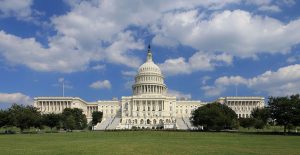TSP, FERS and Public Sector Retirement
TSP and FERS Employees
The Thrift Savings Plan is a retirement package for federal employees. Almost all federal employees are eligible for this program, and TSP and FERS work very well together.

Employees make optional contributions to an account, which are then matched by their employers. Matching contributions only apply to 5% of your salary. The agent makes two types of contributions which are:-
- An automatic 1% whether you contribute to your account or not.
- The first 3% attracts a dollar for dollar compensation while the other 2% gets 50 cents for dollar compensation.
The amount you invest determines how much you will receive after retirement. TSP and FERS work well together, providing both income based on contribution and on your years of service.

Advertisement
Advertisement
Federal Employees Retirement System
FERS is considered to be the best retirement plan as employees under it receive benefits from different sources. The three components of FERS retirement are the basic pension, Social security, and TSP. TSP and FERS are one of the best retirement systems for federal employees.
Basic FERS Pension
A pension fund is a scheme that provides cash payments to retirees to give them some form of income after their working years. In some places, it is also referred to as superannuation fund.
Usually, the employer contributes on the employee’s behalf by setting aside a pool of funds. This is as a way of appreciating their contribution in the organization. One’spension depends on how much they used to earn and the length of service. Upon retirement, the employee either decides to get the whole amount as a lump-sum or receive smaller monthly payments.
Social Security for FERS
Social security is a government program funded by both the employees and their employers. During their working years, employees under FERS pay 6.2% of their salary into the system. The employer then matches these contributions.
General Public Sector Retirement Information
The public sector is also referred to as the state sector and is comprised of organizations that are owned and run by the US government. The main reason for these organizations’ existence is to provide basic goods and services to citizens. Examples include the National and Local governments, military and healthcare institutions.
If an organization cannot be categorized under the public sector it automatically falls under the private or voluntary sector.
Retirement Age
65 is the normal retirement age common for most companies’ retirement plans. However, 66 is the full retirement age where you can collect your social security benefits. If you apply for social security before 66, the benefits received will be reduced.
There are however other significant ages that can help someone to decide their retirement age. For example:-
- At 59.5 you’re allowed to withdraw from plans such as the 401(k)s and not be penalized.
- At 62 you can collect your first social security retirement benefits.
- At 65 years one becomes eligible for Medicare. If you decide to retire before 65 you will have to pay for your own health insurance.
- At 70 you are obliged to start collecting your benefits.






